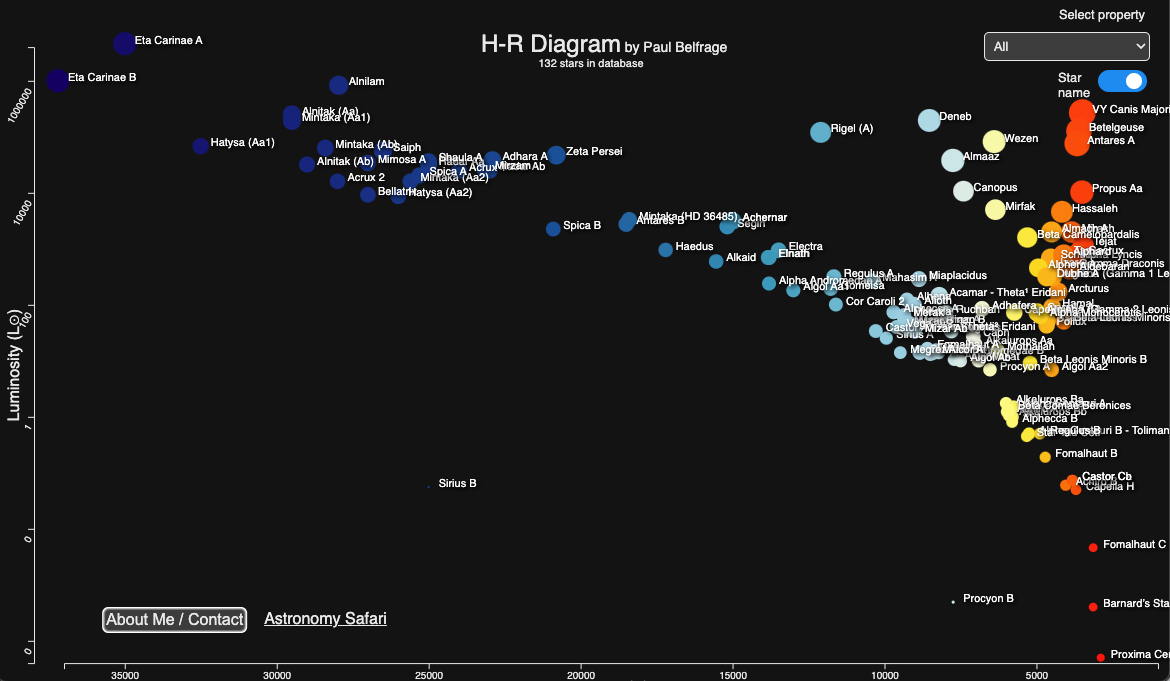Welcome to Astronomy Safari
NEWS: I have created an interactive HR-diagram of stars using D3.js. It allows
users to explore various properties of stars such as temperature, luminosity, radius, and more.
Users can hover over individual stars to see detailed information and can also adjust the size
of the stars using a dropdown menu. Visit the
HR-diagram 
On this web page you can look at images of astronomical objects. In the menu “Type of object" you can choose between different types of galaxies and nebulae, and in the menu “Constellation” you can choose one of the 88 constellations and look at images of astronomical objects that belong to that constellation. If you are interested in finding out how far away an astronomical object is then click on the menu "Distance" and choose a range between different lightyears.
Some objects could fit inside multiple categories. For example NGC 604 is an an huge star forming H II region inside the Triangulum Galaxy. According to Anne's Astronomy News: NGC 604 is an emission nebula, a star-forming (H II) region of nearly 1,500 light-years across, located in a spiral arm of the Triangulum Galaxy but some other sources do not mention that it is an emission nebula. Then I usually put it in a category that most sources agree upon.

If you don't know much about astronomy, the first thing you should do is to find out which constellations you can see from your location by using a star chart. This will help you to find objects that you can observe with your own naked eyes or with small magnitude binoculars. After getting more familiar with the constellations, you can start looking at the images of more distant astronomical objects.
At the same time, you can also read up on facts about the objects you're looking at by clicking on the link below the image
There are 88 recognized constellations. The constellation Serpens is divided in two parts on the sky, Serpens Caput and Serpens Cauda (Head and tail of the snake). I am also using this on this website so there are actually 89 constellations to choose between.